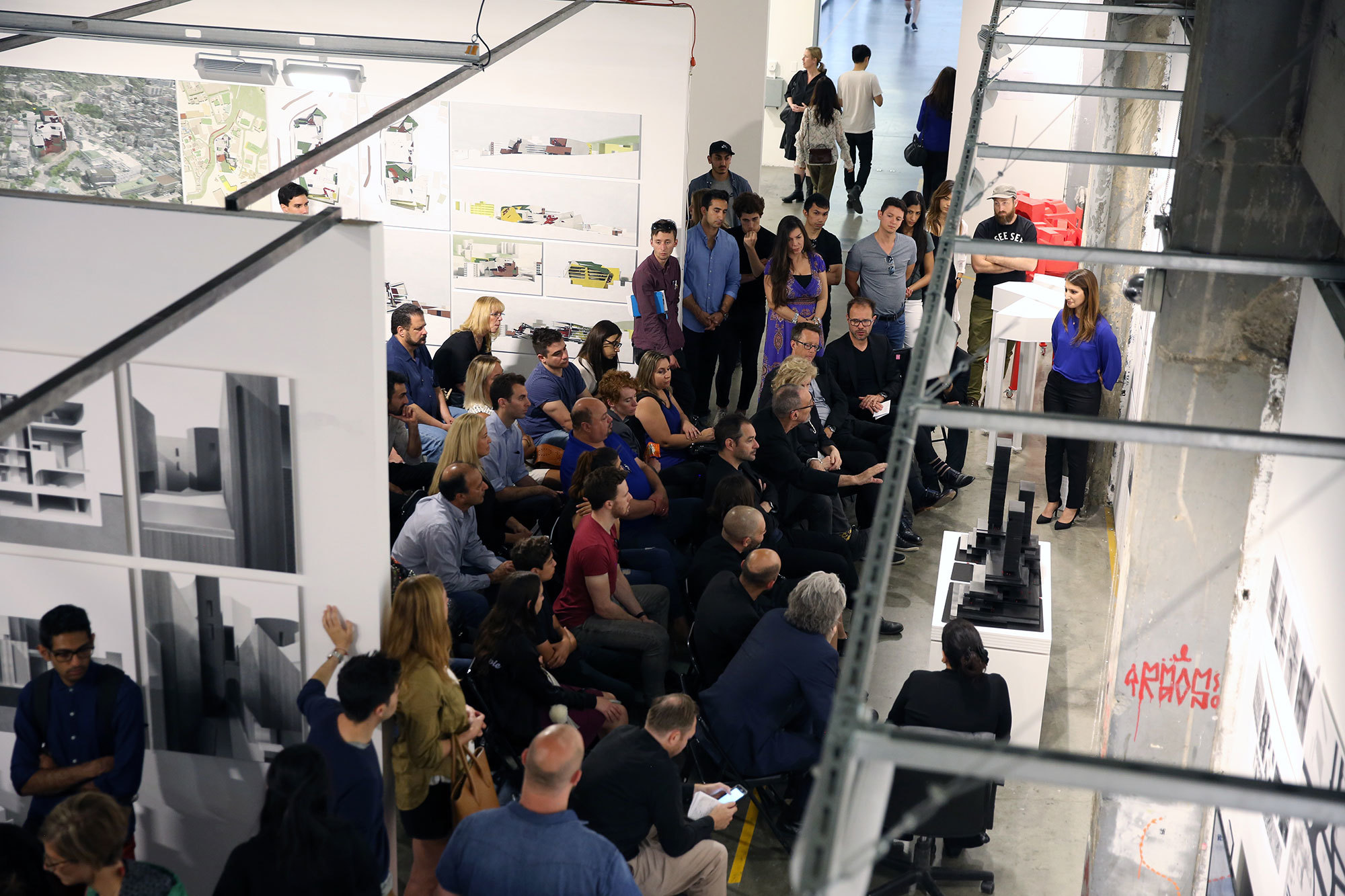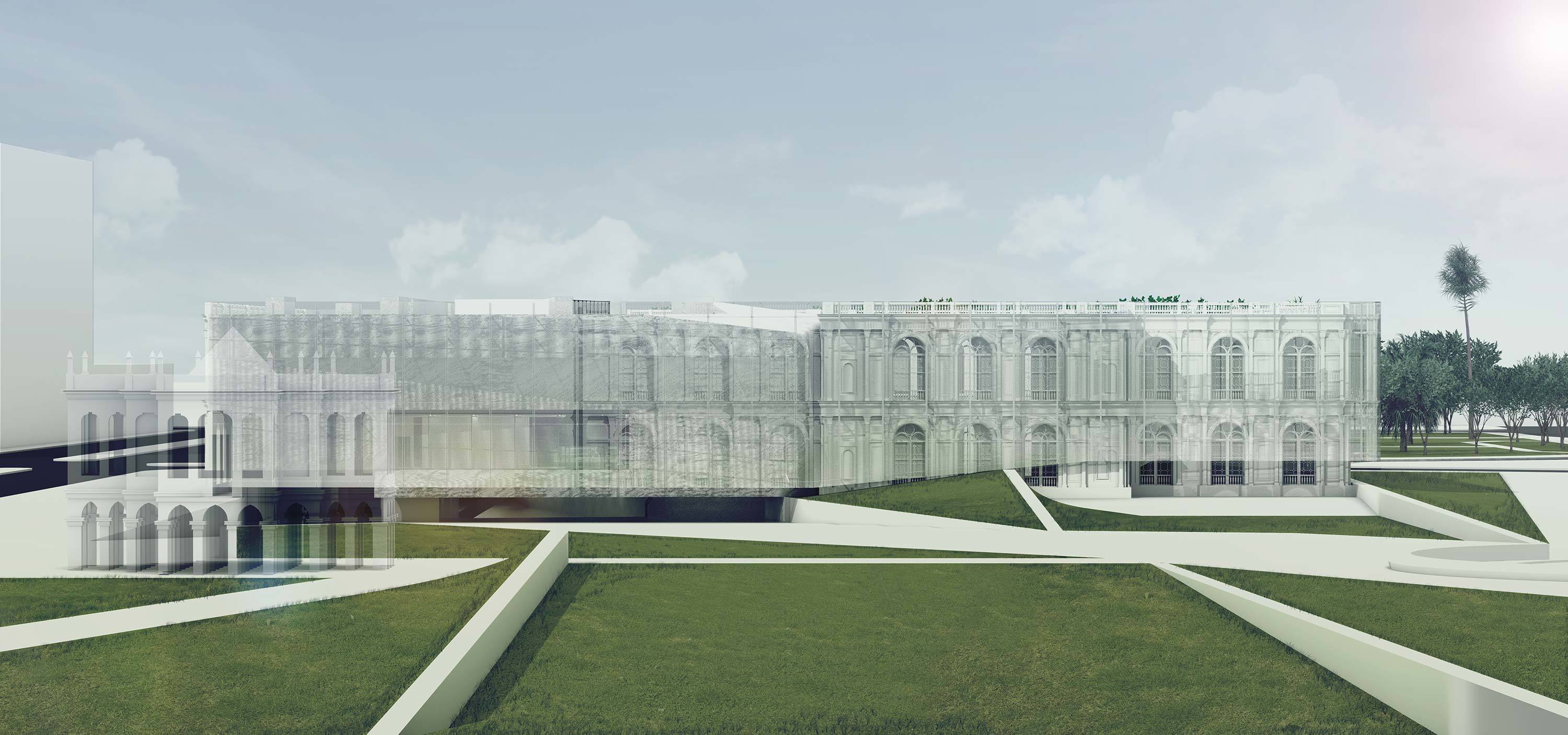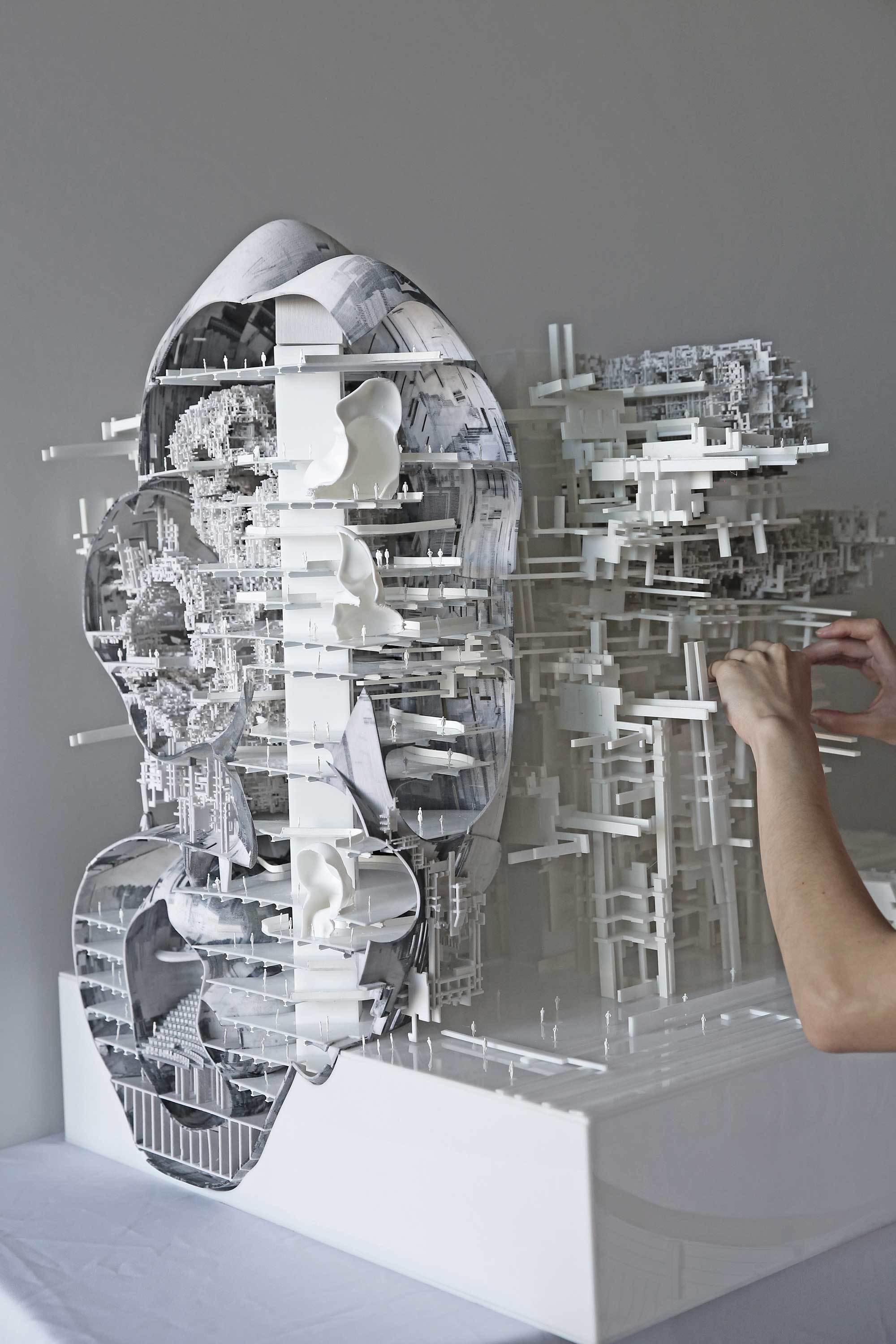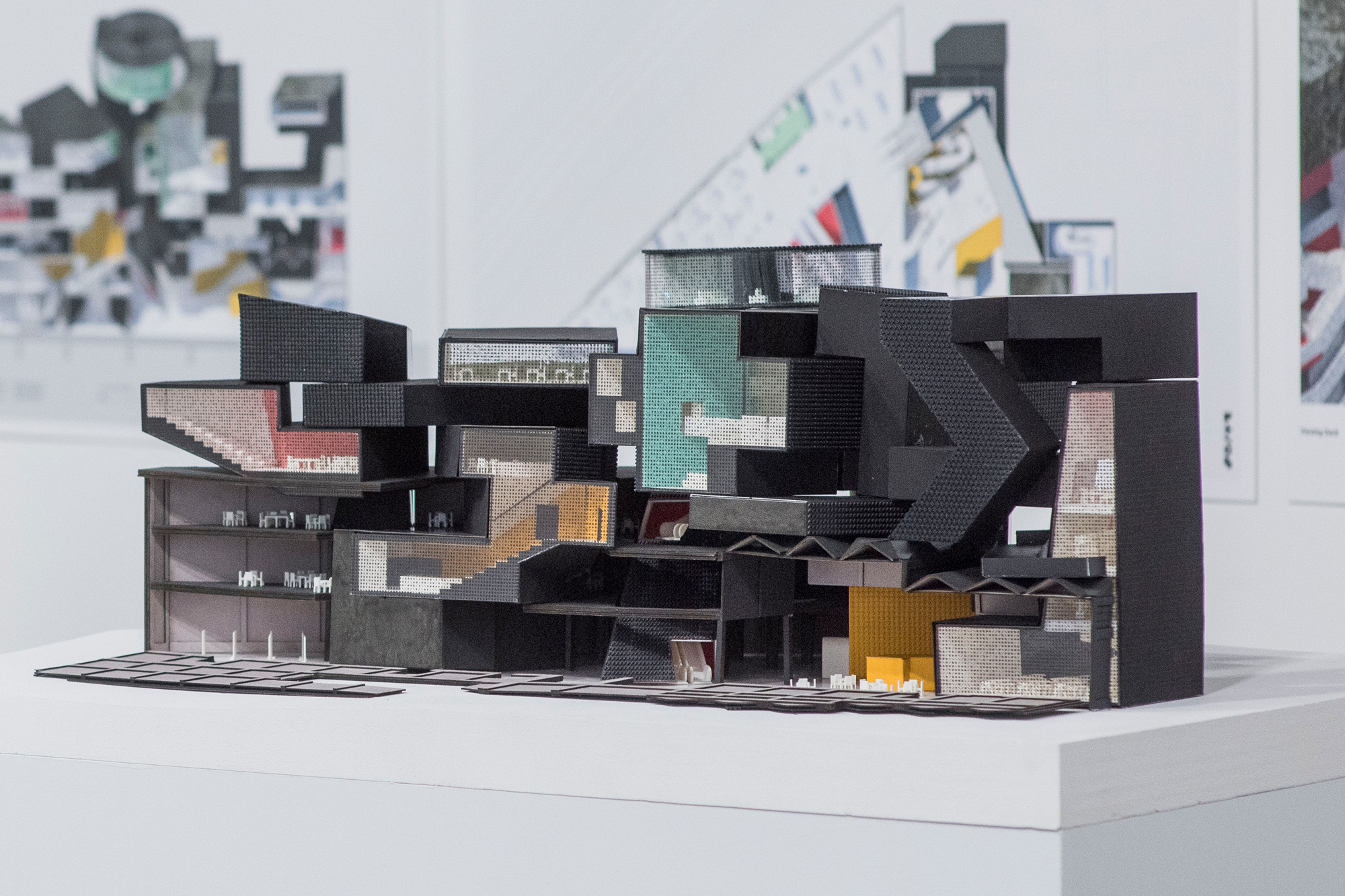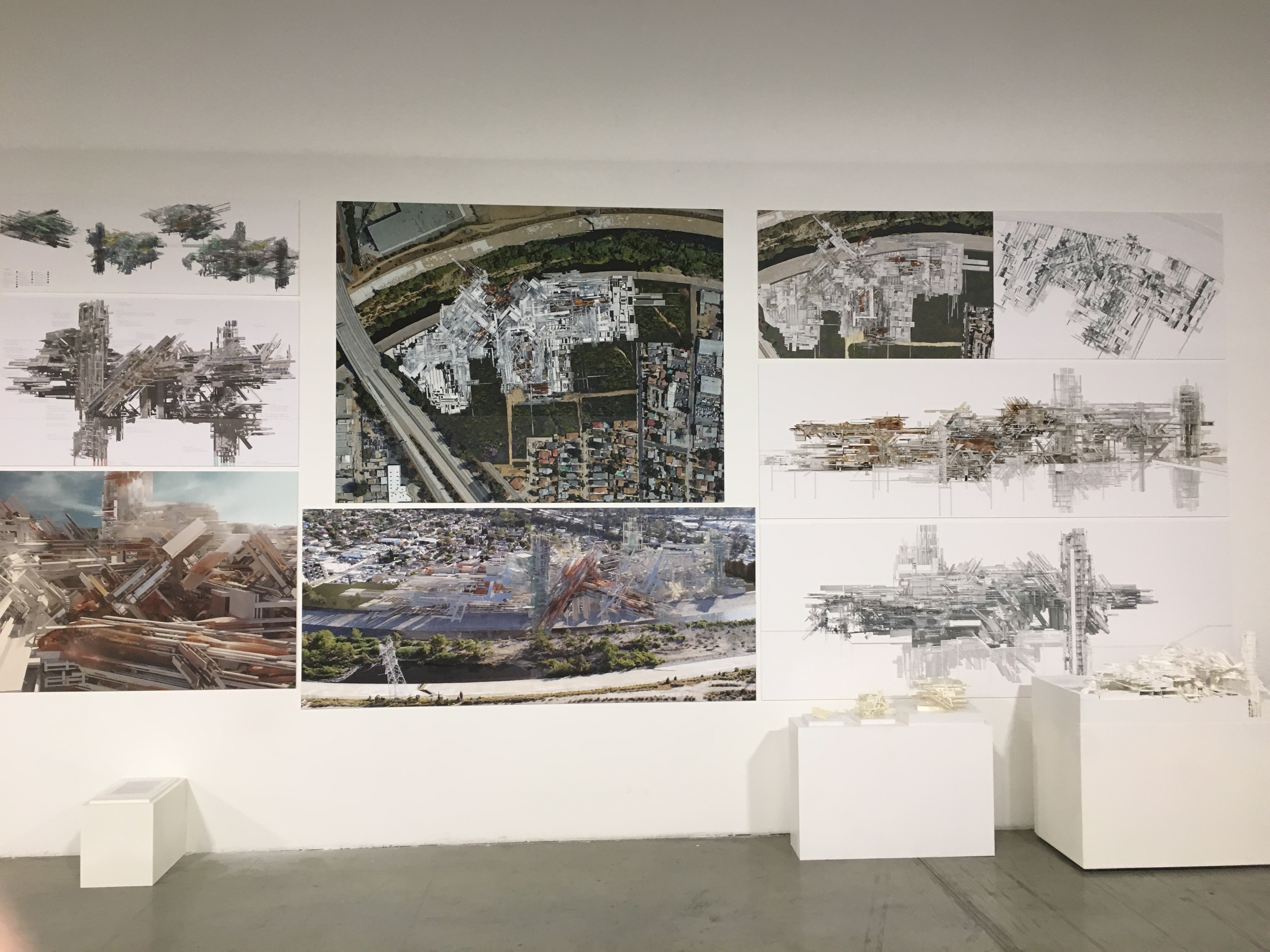2017 Undergraduate Thesis Winners Announced
On April 22, SCI-Arc’s 2017 Undergraduate Thesis Weekend concluded with the reviews of 46 thesis projects by over 70 critics including SCI-Arc faculty and guests including Winka Dubbeldam, Graham Harman, Catherine Ingraham, Ferda Kolatan, Thom Mayne, Roland Snooks, and Neyran Turan. Students presented architectural responses to real-world technological, ecological, and social issues driving both formally and socially relevant innovation.
The event also marked the awarding of The Blythe and Thom Mayne Undergraduate Thesis Prize by SCI-Arc Director Hernan Diaz Alonso and Undergraduate Program Chair Tom Wiscombe to Connor Gravelle. Gravelle’s response to a design competition call for a museum of contemporary art in Lima, Peru directly addressed the challenge of engaging contemporary architecture with existing historic architecture, and the identity of buildings in dual contexts: both in an urban setting within a city, as well as to exhibition visitors in museum space.
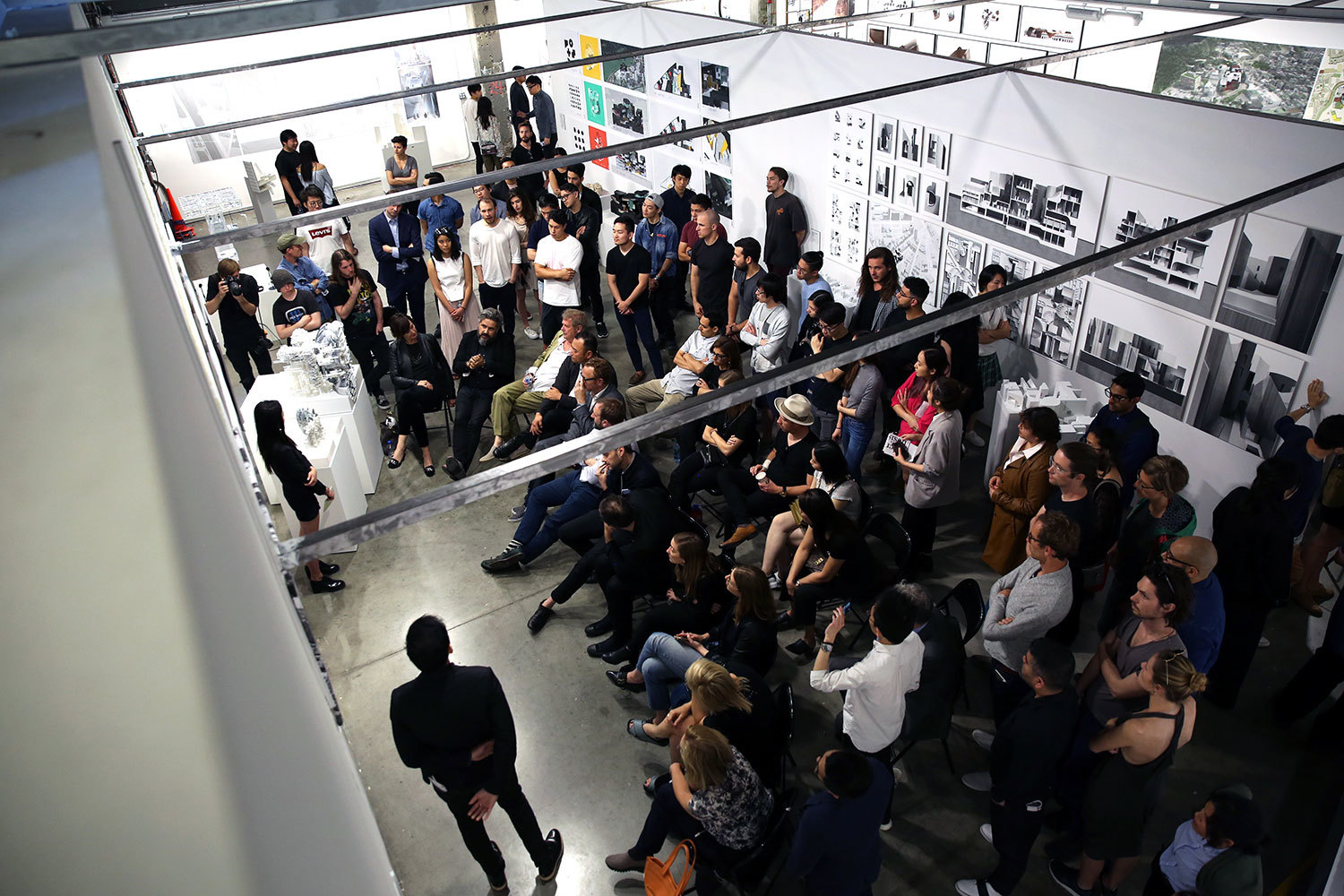
“Connor's project calls for a shift in what we consider to be the background of the world, asking if architecture can inhabit both background and foreground. He is a fabulous student and poised to be a leader in his generation,” Wiscombe says.
“The thesis work of these students is not simply a set of final projects intended to encapsulate everything they have seen or learned throughout their time at SCI-Arc--it is a new point of departure; a glimpse into the future of architectural discourse,” Wiscombe continues. “I’m intrigued by their interest in mashing up formal regimes, contexts, typologies, and up-ending what we consider to be the ‘users’ of architecture, all within the messy contingencies of adaptive re-use projects, urban, and technological infrastructure.”
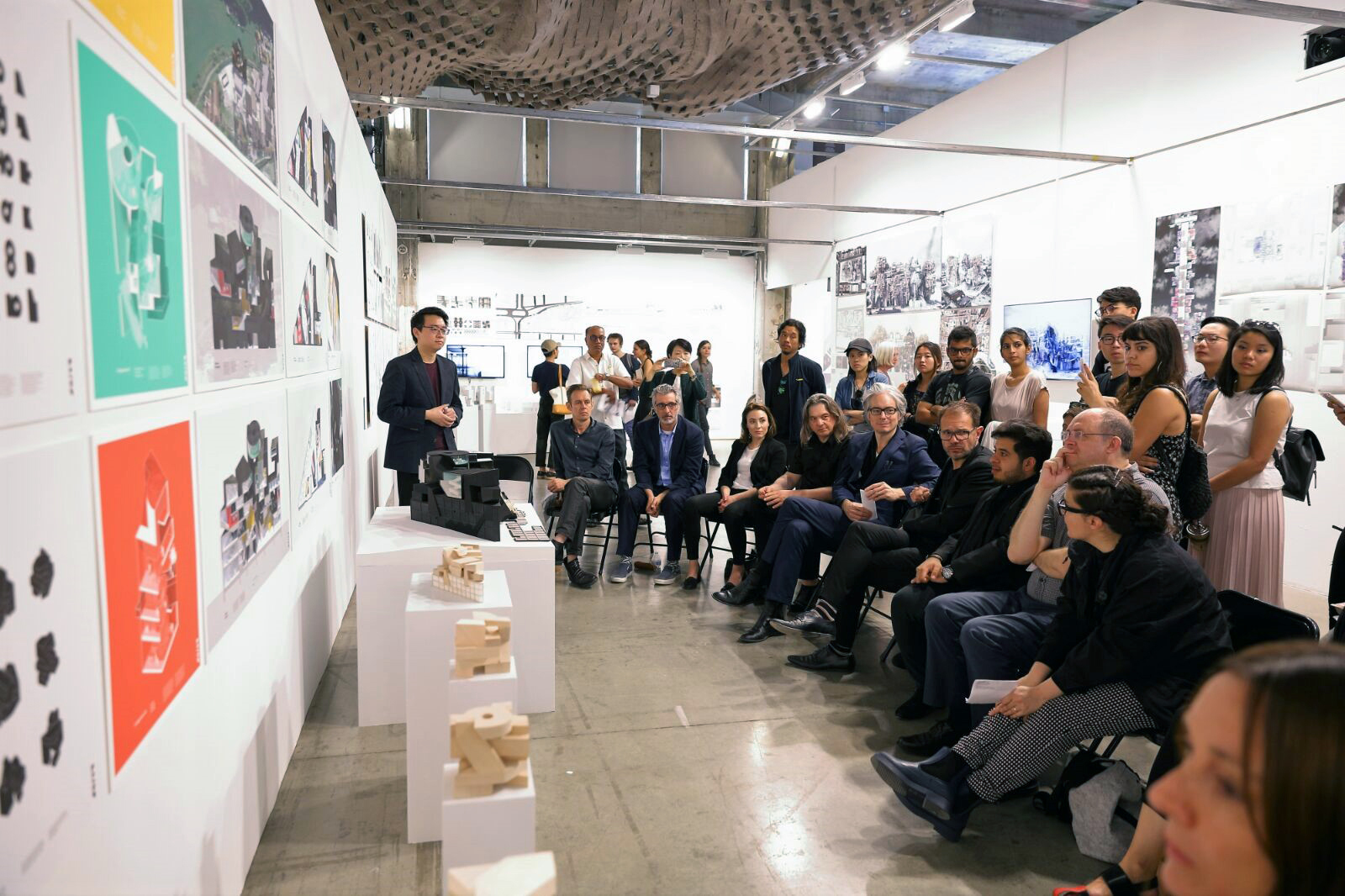
Merit Undergraduate Thesis Awards were given to Deborah Garcia, HyunJi Kim, Amanda Rahayuningtyas and Joel Wong, Jack Oliva-Rendler and Adrian Wong.
- HyunJi Kim for a tech center in Detroit. Her project explored how one thinks about architecture for humans, architecture for technology, and the coexistence of people and machines. “This contemporary contextualism, in which realism is questioned through a process of sampling and remixing, reveals degrees of familiarity but in a totally contemporary formal language," explains Undergraduate Thesis Coordinator Marcelyn Gow.
- Amanda Rahayuningtyas and Joel Wong for their proposal at 6th and Alameda in the Arts District of LA. A formal logic that dealt with discrete components and continuous forms created tension between two formal systems, and created density through residential and mixed-use programming. “Amanda and Joel’s project refuses the idea of architecture as a formal unity, but also as collage,” Wiscombe says. “They deftly replace these notions with the more contemporary idea that multiple, independent formal languages can not only co-exist, but that they can support strange new building typologies.”
- Jack Oliva-Rendler for an engaging proposal along the LA River. A highly complex hybrid building that also functions as infrastructure with conduits for technology and human occupants embraced a contemporary alternative contextualism. "His proposal for LA River is not only formally arresting, but it also begins to give us a concrete idea of what a post-human city might be like. Jack has no time for the sentimentality of many of the proposals for the LA River we have seen lately,” Wiscombe says.
- Garcia’s response for an extension to the Museum of London in the historic Smithfield Market of East London was an adaptive reuse for a contemporary museum that bridged contemporary issues with old and new architecture. According to Wiscombe “Debbie brought an incredibly smart and playful project to the table, exploring the tension between what we consider to be theatrical and what constitutes an audience in 2017."
- Adrian Wong for the adaptive reuse of a Green Academy outside Bologna, Italy. His idea for an existing and abandoned paper factory turned into a school for sustainable technology included an addition onto and into the building, in which he transformed the building’s internal organization through a new formal language. His approach developed clear, legible shapes drawn from industrial building forms, such as the saw tooth roof. “It was a nod to rethinking past forms on the site through a new formal language,” Gow says.
Students were advised by M. Casey Rehm, Marcelo Spina, Peter Testa, Michael Young, Melissa Shin, and Undergraduate Thesis Coordinator Marcelyn Gow. The Special Thesis Advisor for this year’s class was Wolf D. Prix.
Selected thesis projects will be on view in SCI-Arc’s tenth annual Spring Show from April 29 through May 21.
Graduate Thesis work will be reviewed in more detail over the summer. On July 5, graduate thesis will host MINIATURE, an exhibition and presentation of models at the Hauser Wirth Gallery in Los Angeles. Graduate Thesis Final weekend will take place September 8, 9, and 10.
See our gallery
